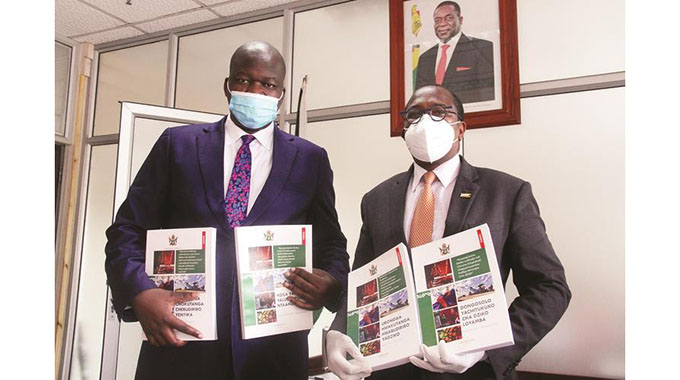Development partners inject US$430 million to support NDS1
GOVERNMENT has paid tribute to development partners for the financial support given towards the implementation of the National Development Strategy (NDSI), which has seen the country receiving nearly half a million dollars in assistance to various sectors of the economy during the first half of 2021.
NDS1 is a five-year (2021-2025) successor blueprint to the short-term Transitional Stabilisation Programme (TSP) and builds the momentum towards the attainment of an upper-middle-income Vision by 2030.
Under the image building and international engagement and re-engagement focus of the NDS1, the Second Republic led by President Mnangagwa has opened the economy to potential investors and is ready to work with all friendly countries to pursue mutual economic and developmental interests.
This has seen a number of international organisations and countries, including those that previously were deemed hostile to the country, recently seeking to deepen bilateral ties with Zimbabwe.
In his recent Mid-Term 2021 National Budget Review Statement, Finance and Economic Development Minister, Professor Mthuli Ncube, said the Government was appreciative of the continued bilateral and multilateral support being channelled to Zimbabwe. “Development partners are supporting Government programmes and projects under NDS1 across the various sectors of our economy.
However, planned implementation of programmes and projects continues to be affected/delayed by the unprecedented impact of the Covid-19 pandemic,” he told Parliament.
“Support during the first half of the year amounted to US$430 million, of which US$273,4 million was from bilateral while US$156,7 million was from multilateral partners.”
According to the budget review statement the United States of America tops the ladder, having availed a cumulative US$203,8 million by end of June 2021 followed by United Kingdom at US$21,8 million.
The European Union had during the period under review availed (US$15,6 million), Sweden (US$14,3million), Japan (US$10,1million), Switzerland (US$2,9 million), Germany (US$3,3million), France (US$1million), Netherlands (US$3,7million) and Canad (US$1,2 million) giving a cumulative total of US$273,4 million.
Several multi-lateral organisations such as the Global Fund, World bank, African Development Bank, World Health Organisation, Unicef, among others have also chipped in with different amount resulting in a combined estimate of US$156,6 million support.
Prof Ncube said the funding support was mainly channelled towards the agriculture sector, transport, power and energy, water and sanitation, health, education, governance, multisector humanitarian and capacity building initiative, basic social services and Cyclone Idai recovery.
The health sector, which needed more support related to Covid-19 mitigation, received less than projected external funding injection as the global community also felt the impact of the pandemic.
“During the period under review, development partners contributed resources amounting to US$17 million against an annual projection of US$214 million in response to the Covid19 pandemic.
“The funds went towards procurement of medical equipment, Personal Protective Equipment (PPE), provision of test kits and hand washing facilities,” said Prof Ncube.
“In addition, Government appreciate support through a donation of 560 000 doses of vaccines that have come in the country from the Governments of China, India and Russia.”
Minister Ncube said the World Bank through the Zimbabwe Idai Recovery Programme (ZIRP) and the Zimbabwe Recovery and Resilience Project (ZRRP) together with the African Development Bank (AfDB) through the Post Cyclone Idai Recovery Project (PCIRP), have committed to disburse US$28 million during 2021 towards rehabilitation of damaged infrastructure and rebuilding of lost livelihoods for the areas most affected.
“During the period under review, resources amounting to US$6,9 million have since been disbursed under the ZIRP project towards restoration of communal irrigation schemes, livelihood projects, rehabilitation of damaged schools, community infrastructure (access roads, bridges and erosion control measures), and provision of community risk mitigation solutions,” said Prof Ncube.-Chronicle.cl.zw









